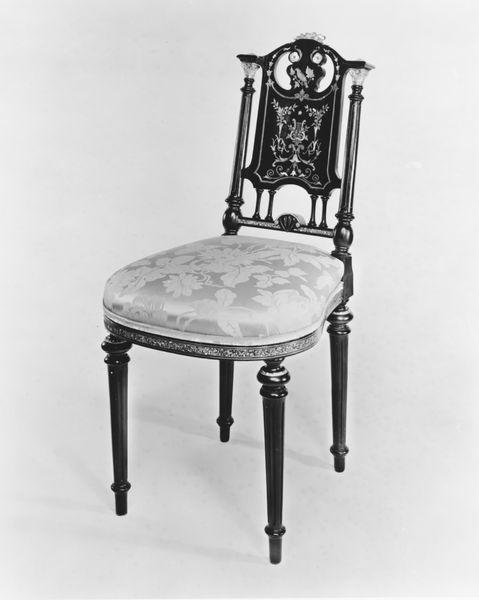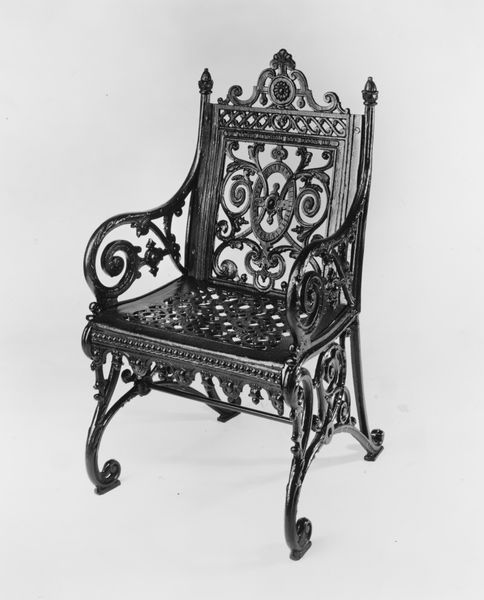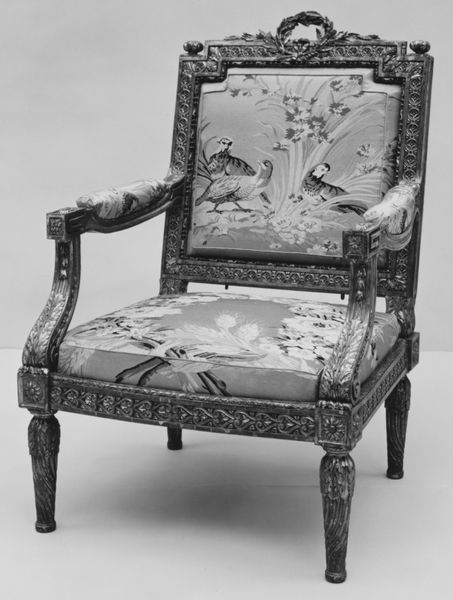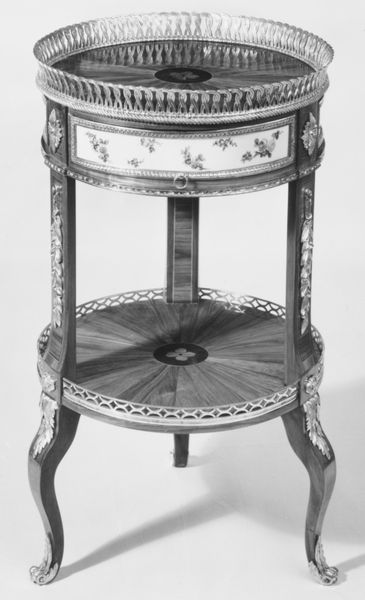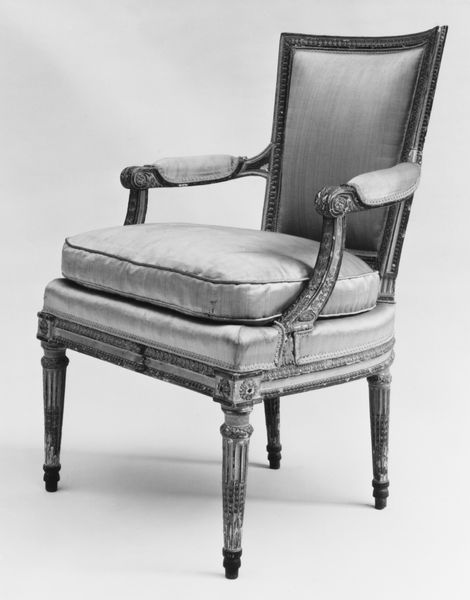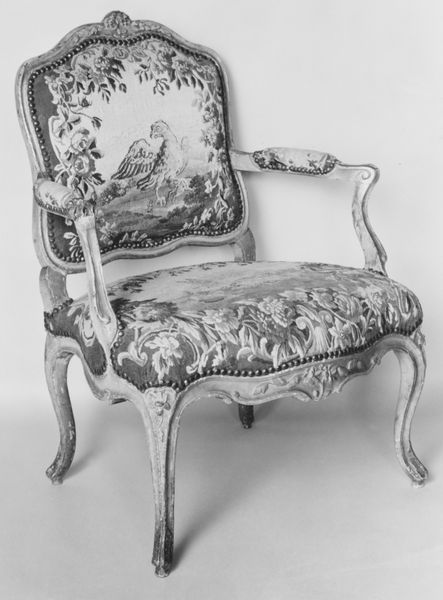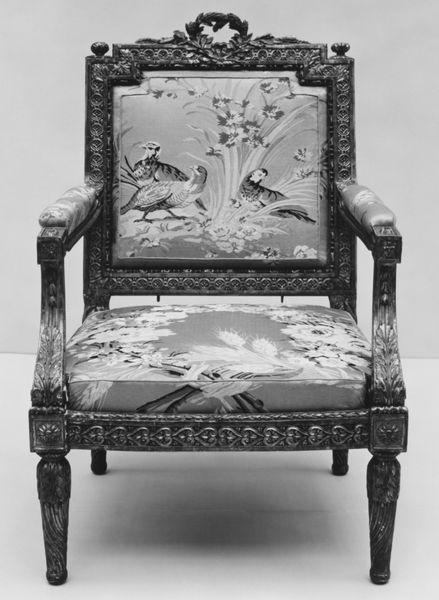
mixed-media, carving, textile, sculpture, wood
#
portrait
#
mixed-media
#
carving
#
sculpture
#
furniture
#
textile
#
sculpture
#
united-states
#
wood
#
decorative-art
Dimensions: 48 3/4 x 25 1/2 x 23 in. (123.8 x 64.8 x 58.4 cm)
Copyright: Public Domain
Editor: This side chair, crafted by Pottier and Stymus Manufacturing Company between 1872 and 1875, showcases a mix of wood carving and textile work. It strikes me as intensely ornate; every surface seems to be decorated. What do you see in this piece, particularly considering its materials and craftsmanship? Curator: The chair presents a fascinating window into 19th-century American industrial production and consumption. Forget any pretense of singular artistry, and consider this: this wasn't carved by one artisan alone. Think of divisions of labor, specialized workshops churning out components. Editor: So, you’re saying the “hand-crafted” look is almost deceptive? Curator: Precisely! The varied materials - the wood, the textile, even the trim - likely came from different sources, possibly even different countries. Pottier and Stymus were masters of assembly and marketing, more than individual creation. They were catering to a burgeoning upper class eager to display wealth through elaborate, seemingly handcrafted objects. Consider the cost of such a piece in its day. What kind of labor produced that textile? Editor: So it speaks to economic status more than artistic vision? Curator: The artistic vision here is intricately tied to its economic purpose! This chair is as much a product of industrial capitalism as it is of aesthetic design. By focusing on how it was made and who it was for, we can better understand the cultural landscape it occupied. What did owning something like this represent for people then? Editor: It gives me a lot to consider, viewing the artistry and aesthetic as secondary to its purpose as a signifier of wealth and industrial processes. Thank you! Curator: Indeed! Thinking about art this way offers entirely new avenues to understanding its place in the world.
Comments
No comments
Be the first to comment and join the conversation on the ultimate creative platform.
